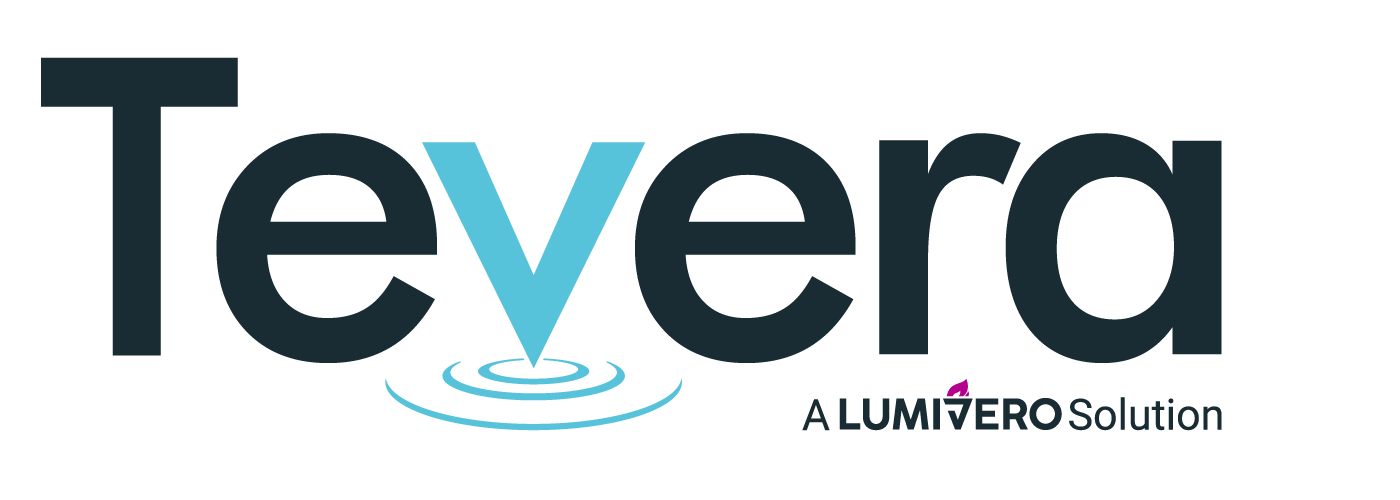Mastering Consistent Data Collection & Analysis: A Practical Guide for University Administrators
As any program administrator knows, having consistent, reliable, and readily available data is crucial for efficient program administration. University administrators grapple with evaluating student performance, assessing program effectiveness, and meeting accreditation requirements. These challenges can often be compounded by disparate systems and the lack of centralized reporting structures. This short article will delve into how you can overcome these hurdles and ensure systematic data collection and analysis.
Understanding the Importance of Consistent Data Collection and Analysis
Accurate data serves as the bedrock of informed decision-making processes. For university administrators, it can shed light on critical metrics, such as student performance, program efficacy, and compliance with accreditation standards. Consistency in data collection and analysis ensures reliability, enabling administrators to benchmark progress, spot trends, and devise strategies that truly make an impact.
Navigating Through Disparate Systems
One of the foremost challenges lies in the diverse range of systems that educational institutions use. These may include Student Information Systems (SIS), Learning Management Systems (LMS), CRM software, among others. Using APIs or middleware can facilitate smooth data exchange between these platforms, offering a unified view of critical metrics. Tevera integrates with many of the leading Learning Management Systems including:
-
- Blackboard
- Canvas
- Desire to Learn (D2L)
- Moodle
- Ellucian Banner Ethos
Tevera Integrations
Learn more about Tevera integrations here.
Investing in Centralized Reporting Systems
Having a centralized reporting system can significantly streamline data management and accessibility. Business Intelligence (BI) tools like Tableau, Microsoft Power BI, or Google Data Studio can aggregate data from different sources, providing an interactive, real-time dashboard for tracking key performance indicators (KPIs). But these systems can also be complicated and/or expensive.
Tevera offers program administrators a centralized reporting system, drawing together the data collected within the platform in a multitude of formats.
Centralized Reporting with Tevera
Learn more about Tevera’s reports, specifically designed to simplify reporting for accreditation, student performance, and overall program performance, here.
Ensuring Data Consistency
Consistency in data collection and reporting helps to maintain data integrity and credibility. This involves creating and implementing data governance policies, defining standardized data collection processes, and training relevant stakeholders on these standards.
Regular Data Auditing and Cleaning
Data quality is just as important as its quantity. Regular auditing helps identify anomalies, duplicates, or errors that might have crept into your data. Employing data cleaning methods ensures the accuracy and reliability of your datasets.
Leveraging Advanced Analytics and AI
For complex datasets, advanced analytical tools can help glean insights that might not be immediately apparent. Artificial Intelligence (AI) and Machine Learning (ML) can help predict trends, enabling proactive decision-making. Advances in AI are rapidly expanding the range of options available to administrators.
Practical Implementation
Start with a comprehensive review of your current data collection and reporting processes. Identify gaps and areas of improvement. Next, engage relevant stakeholders – faculty, IT department, etc. – to create and implement a standardized data governance policy. Finally, invest in a centralized reporting system to provide a comprehensive view of your data.
Conclusion
Ensuring consistent data collection and analysis might seem daunting, but it’s undoubtedly a game-changer for higher education institutions. By leveraging technology and implementing best practices, university administrators can make informed decisions that bolster student success, enhance program efficacy, and satisfy accreditation standards. Remember – data is your ally, and harnessing it effectively can propel your institution towards its goals.
SOLUTIONS
RELATED POSTS
PRODUCT OVERVIEW
See how Tevera can elevate your program.
Mastering Consistent Data Collection & Analysis: A Practical Guide for University Administrators
As any program administrator knows, having consistent, reliable, and readily available data is crucial for efficient program administration. University administrators grapple with evaluating student performance, assessing program effectiveness, and meeting accreditation requirements. These challenges can often be compounded by disparate systems and the lack of centralized reporting structures. This short article will delve into how you can overcome these hurdles and ensure systematic data collection and analysis.
Understanding the Importance of Consistent Data Collection and Analysis
Accurate data serves as the bedrock of informed decision-making processes. For university administrators, it can shed light on critical metrics, such as student performance, program efficacy, and compliance with accreditation standards. Consistency in data collection and analysis ensures reliability, enabling administrators to benchmark progress, spot trends, and devise strategies that truly make an impact.
Navigating Through Disparate Systems
One of the foremost challenges lies in the diverse range of systems that educational institutions use. These may include Student Information Systems (SIS), Learning Management Systems (LMS), CRM software, among others. Using APIs or middleware can facilitate smooth data exchange between these platforms, offering a unified view of critical metrics. Tevera integrates with many of the leading Learning Management Systems including:
-
- Blackboard
- Canvas
- Desire to Learn (D2L)
- Moodle
- Ellucian Banner Ethos
Tevera Integrations
Learn more about Tevera integrations here.
Investing in Centralized Reporting Systems
Having a centralized reporting system can significantly streamline data management and accessibility. Business Intelligence (BI) tools like Tableau, Microsoft Power BI, or Google Data Studio can aggregate data from different sources, providing an interactive, real-time dashboard for tracking key performance indicators (KPIs). But these systems can also be complicated and/or expensive.
Tevera offers program administrators a centralized reporting system, drawing together the data collected within the platform in a multitude of formats.
Centralized Reporting with Tevera
Learn more about Tevera’s reports, specifically designed to simplify reporting for accreditation, student performance, and overall program performance, here.
Ensuring Data Consistency
Consistency in data collection and reporting helps to maintain data integrity and credibility. This involves creating and implementing data governance policies, defining standardized data collection processes, and training relevant stakeholders on these standards.
Regular Data Auditing and Cleaning
Data quality is just as important as its quantity. Regular auditing helps identify anomalies, duplicates, or errors that might have crept into your data. Employing data cleaning methods ensures the accuracy and reliability of your datasets.
Leveraging Advanced Analytics and AI
For complex datasets, advanced analytical tools can help glean insights that might not be immediately apparent. Artificial Intelligence (AI) and Machine Learning (ML) can help predict trends, enabling proactive decision-making. Advances in AI are rapidly expanding the range of options available to administrators.
Practical Implementation
Start with a comprehensive review of your current data collection and reporting processes. Identify gaps and areas of improvement. Next, engage relevant stakeholders – faculty, IT department, etc. – to create and implement a standardized data governance policy. Finally, invest in a centralized reporting system to provide a comprehensive view of your data.
Conclusion
Ensuring consistent data collection and analysis might seem daunting, but it’s undoubtedly a game-changer for higher education institutions. By leveraging technology and implementing best practices, university administrators can make informed decisions that bolster student success, enhance program efficacy, and satisfy accreditation standards. Remember – data is your ally, and harnessing it effectively can propel your institution towards its goals.
Mastering Consistent Data Collection & Analysis: A Practical Guide for University Administrators
As any program administrator knows, having consistent, reliable, and readily available data is crucial for efficient program administration. University administrators grapple with evaluating student performance, assessing program effectiveness, and meeting accreditation requirements. These challenges can often be compounded by disparate systems and the lack of centralized reporting structures. This short article will delve into how you can overcome these hurdles and ensure systematic data collection and analysis.
Understanding the Importance of Consistent Data Collection and Analysis
Accurate data serves as the bedrock of informed decision-making processes. For university administrators, it can shed light on critical metrics, such as student performance, program efficacy, and compliance with accreditation standards. Consistency in data collection and analysis ensures reliability, enabling administrators to benchmark progress, spot trends, and devise strategies that truly make an impact.
Navigating Through Disparate Systems
One of the foremost challenges lies in the diverse range of systems that educational institutions use. These may include Student Information Systems (SIS), Learning Management Systems (LMS), CRM software, among others. Using APIs or middleware can facilitate smooth data exchange between these platforms, offering a unified view of critical metrics. Tevera integrates with many of the leading Learning Management Systems including:
-
- Blackboard
- Canvas
- Desire to Learn (D2L)
- Moodle
- Ellucian Banner Ethos
Tevera Integrations
Learn more about Tevera integrations here.
Investing in Centralized Reporting Systems
Having a centralized reporting system can significantly streamline data management and accessibility. Business Intelligence (BI) tools like Tableau, Microsoft Power BI, or Google Data Studio can aggregate data from different sources, providing an interactive, real-time dashboard for tracking key performance indicators (KPIs). But these systems can also be complicated and/or expensive.
Tevera offers program administrators a centralized reporting system, drawing together the data collected within the platform in a multitude of formats.
Centralized Reporting with Tevera
Learn more about Tevera’s reports, specifically designed to simplify reporting for accreditation, student performance, and overall program performance, here.
Ensuring Data Consistency
Consistency in data collection and reporting helps to maintain data integrity and credibility. This involves creating and implementing data governance policies, defining standardized data collection processes, and training relevant stakeholders on these standards.
Regular Data Auditing and Cleaning
Data quality is just as important as its quantity. Regular auditing helps identify anomalies, duplicates, or errors that might have crept into your data. Employing data cleaning methods ensures the accuracy and reliability of your datasets.
Leveraging Advanced Analytics and AI
For complex datasets, advanced analytical tools can help glean insights that might not be immediately apparent. Artificial Intelligence (AI) and Machine Learning (ML) can help predict trends, enabling proactive decision-making. Advances in AI are rapidly expanding the range of options available to administrators.
Practical Implementation
Start with a comprehensive review of your current data collection and reporting processes. Identify gaps and areas of improvement. Next, engage relevant stakeholders – faculty, IT department, etc. – to create and implement a standardized data governance policy. Finally, invest in a centralized reporting system to provide a comprehensive view of your data.
Conclusion
Ensuring consistent data collection and analysis might seem daunting, but it’s undoubtedly a game-changer for higher education institutions. By leveraging technology and implementing best practices, university administrators can make informed decisions that bolster student success, enhance program efficacy, and satisfy accreditation standards. Remember – data is your ally, and harnessing it effectively can propel your institution towards its goals.



















